
Nature's Giants: Photos of the Tallest Trees on Earth
Nature's giants
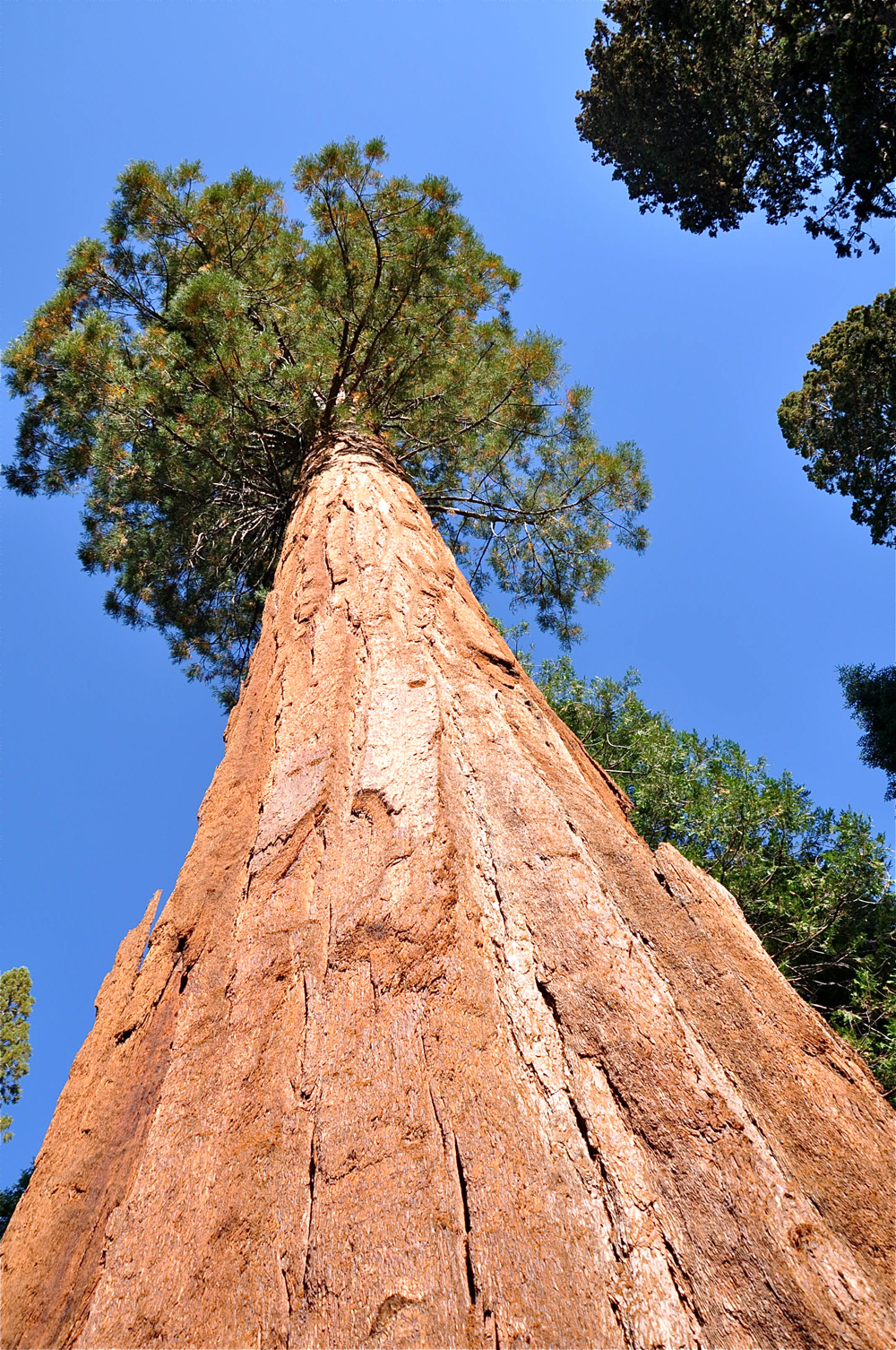
Sequoia is a name given to two species of coniferous evergreen redwood trees of the bald cypress family that grow in a narrow strip of land in central and northern California and southern Oregon. Sequoiadendron giganteum are the Giant Sequoias that grow only on the western slopes of the Sierra Nevada Mountains of California and are the most massive trees in the world. Some Giant Sequoia trees are believed to be 3,000 to 4,000 years old. Sequoia sempervirens are the Coastal Redwoods that grow along the Pacific coastline and are the tallest known trees in the world.
Ancient survivors
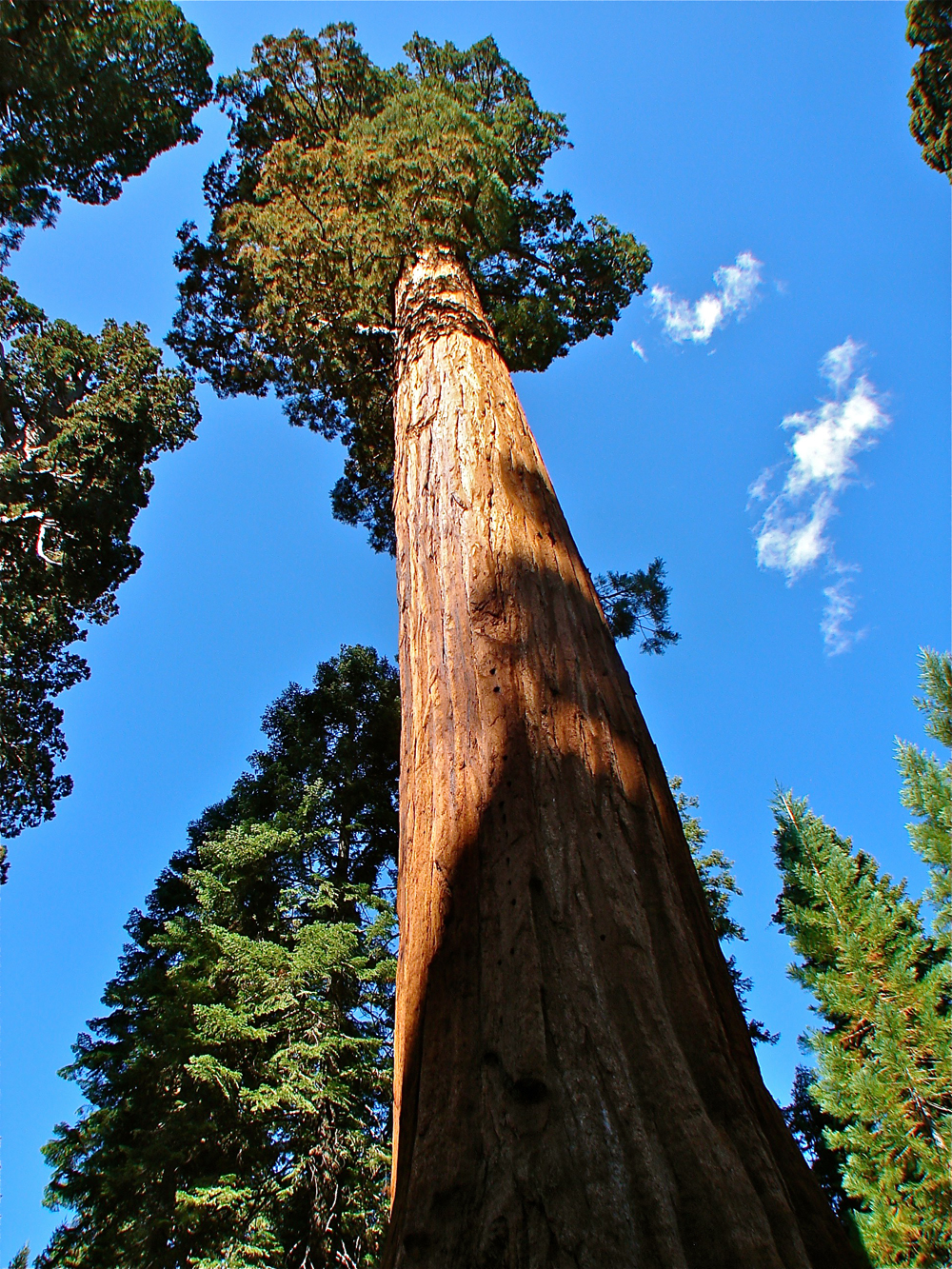
Sequoiadendrons once flourished as the dominant tree in Europe and North America during the Triassic, Jurassic and Cretaceous Periods some 200 million to 70 million years ago. They stood with the dinosaurs, but when the dinosaurs died out at the end of the Cretaceous Period, the Sequoiadendrons lived on.
As the Earth cooled and rain patterns began to dry, these giant trees became extinct in Europe and only found a livable habitat in the Sierra Nevada Mountains of California with its relatively deep soil and a permanent source of moisture in the soil from stream and sub-surface springs.
First records

The first record of these giant trees by Americans was made by a chronicler for the Joseph Walker party by the name of Leonard during an 1833 crossing of the Sierra Nevadas. But the world would not learn of these giant trees until June 1852 when an article by A.T. Dowd appeared in the Sonora Herald newspaper of Sonora, Calif. Soon the newspapers of San Francisco carried the news and within a year a London newspaper announced the Giant Sequoia to the people of Europe.
Popular curiousity
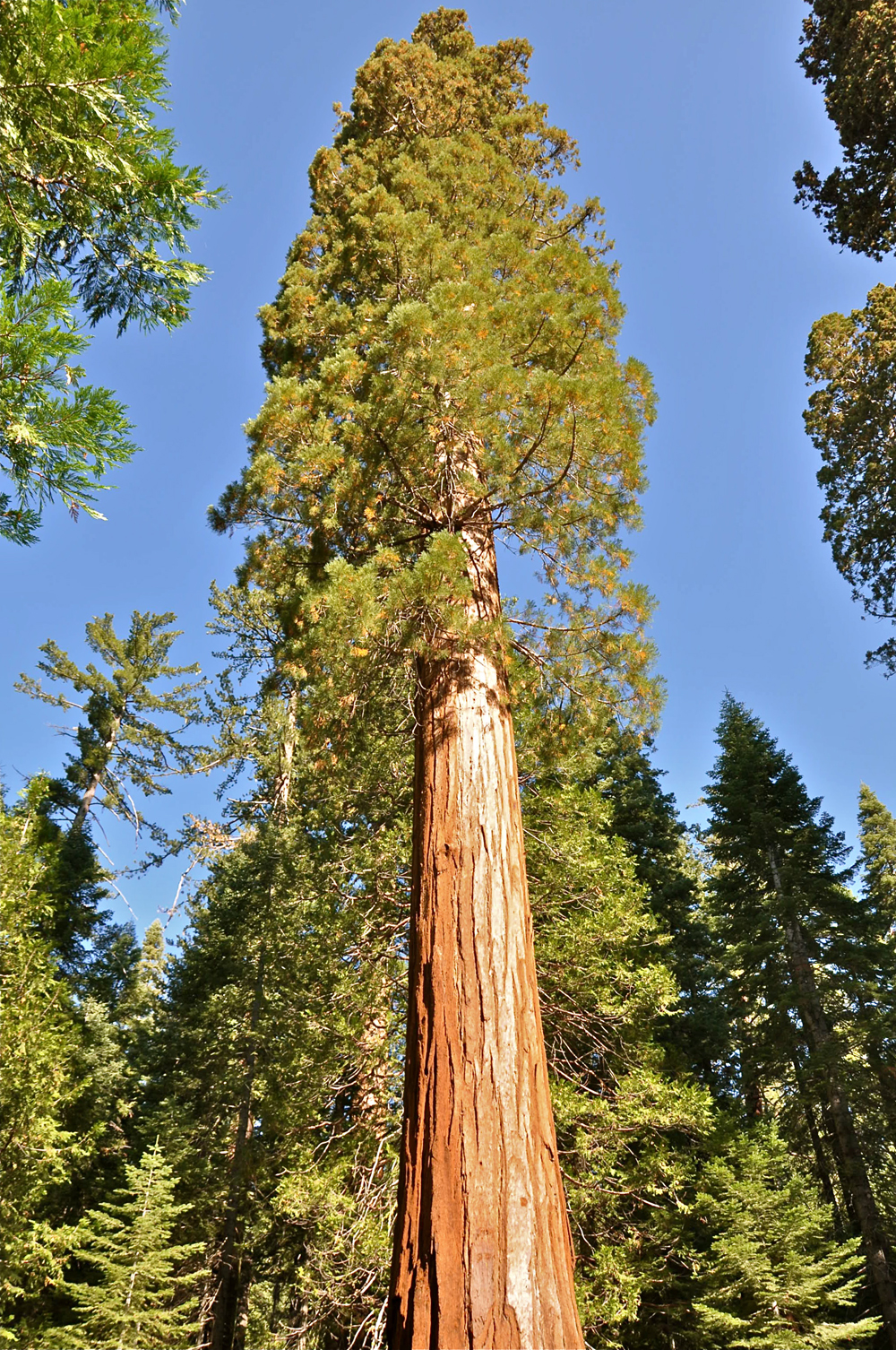
Botanists as well as the simply curious came from near and far to see for themselves trees said to be so large. Were they a newly discovered species or related to other known trees? What would these giants be called? Modern historians believe the name "sequoia" actually came from the Latinizing of a popular Cherokee Indian's name, Sequoyah, who had worked for 12 years to create an alphabet so that the Cherokee language could be written. Even though Sequoyah lived some 3,000 miles (4,800 kilometers) from these botanical giants, his name is the best account for the origin of this unique and uncommon name.
Scale-like branchlets

Giant Sequoias are evergreen and their scale-like, blue-green leaves are awl-shaped. The leaves are one-eighth to one-quarter inch (3.2 to 6.4 millimeters) long and overlap each other while being aligned spirally on the sturdy stems. This leaf arrangement gives each branchlet a distinctive rope-like form. The tip of each leaf is prickly and the leaves are shed collectively with the entire branch.
Small cones
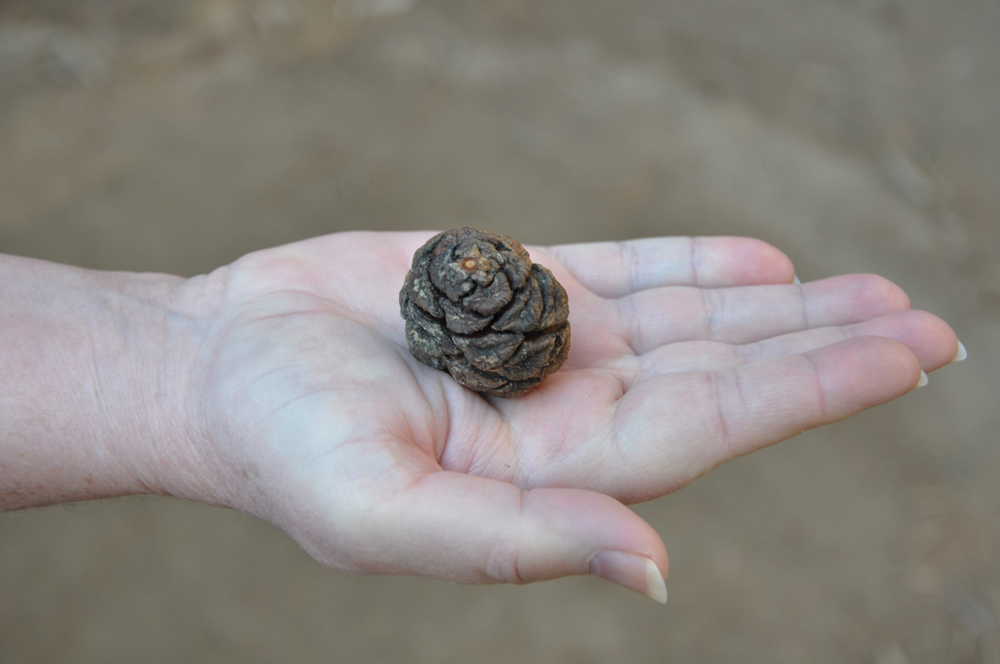
All Giant Sequoia trees produce both a male and female cone when they reach the age of 10. For such giant trees, the cones are quite small, about 2 to 3 inches (5 to 7.6 centimeters) only about the size of a chicken egg. The seed cones are green as they develop and do not reach maturity until the end of the second year. They may remain alive and closed for as many as 20 years before opening and releasing their seeds. The exterior of each cone has 30 to 50 spirally shaped scales. A typical cone will produce and average of 230 seeds.
Tiny seeds
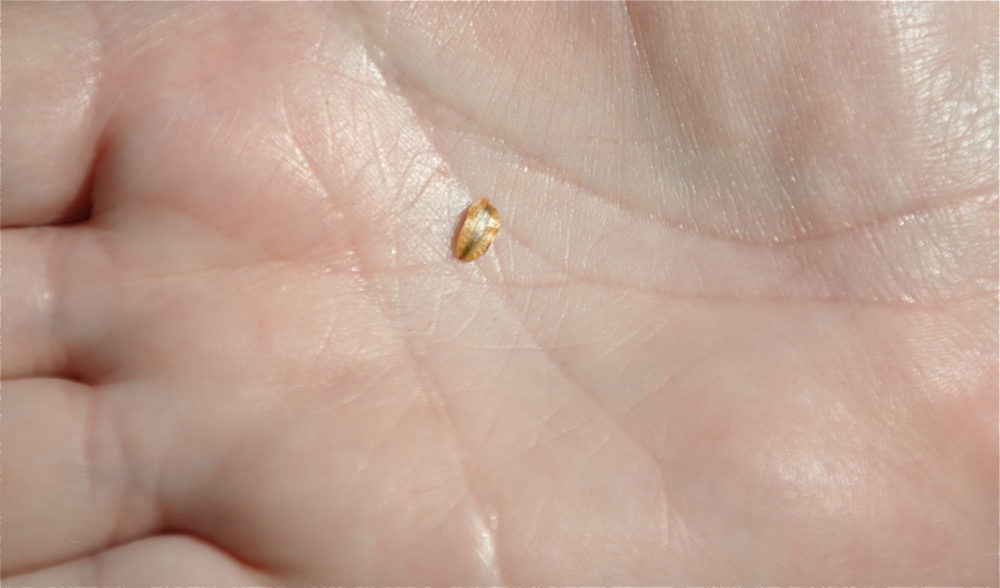
The seeds of the world's most massive trees are very small, 0.5 inch (13 mm) in length and 0.25 inch (6 mm) in width. They are about the size of a flake of oatmeal. A bag holding a pound of sequoia seeds would contain about 91,000 seeds. Two yellow-brown wings are found on each side of the tiny embryo that aid seed dispersal. Some seeds are set free during the hot, drying weather of late summer, but most are released as a result of insect damage or the heat from fire.
Get the world’s most fascinating discoveries delivered straight to your inbox.
Young trees
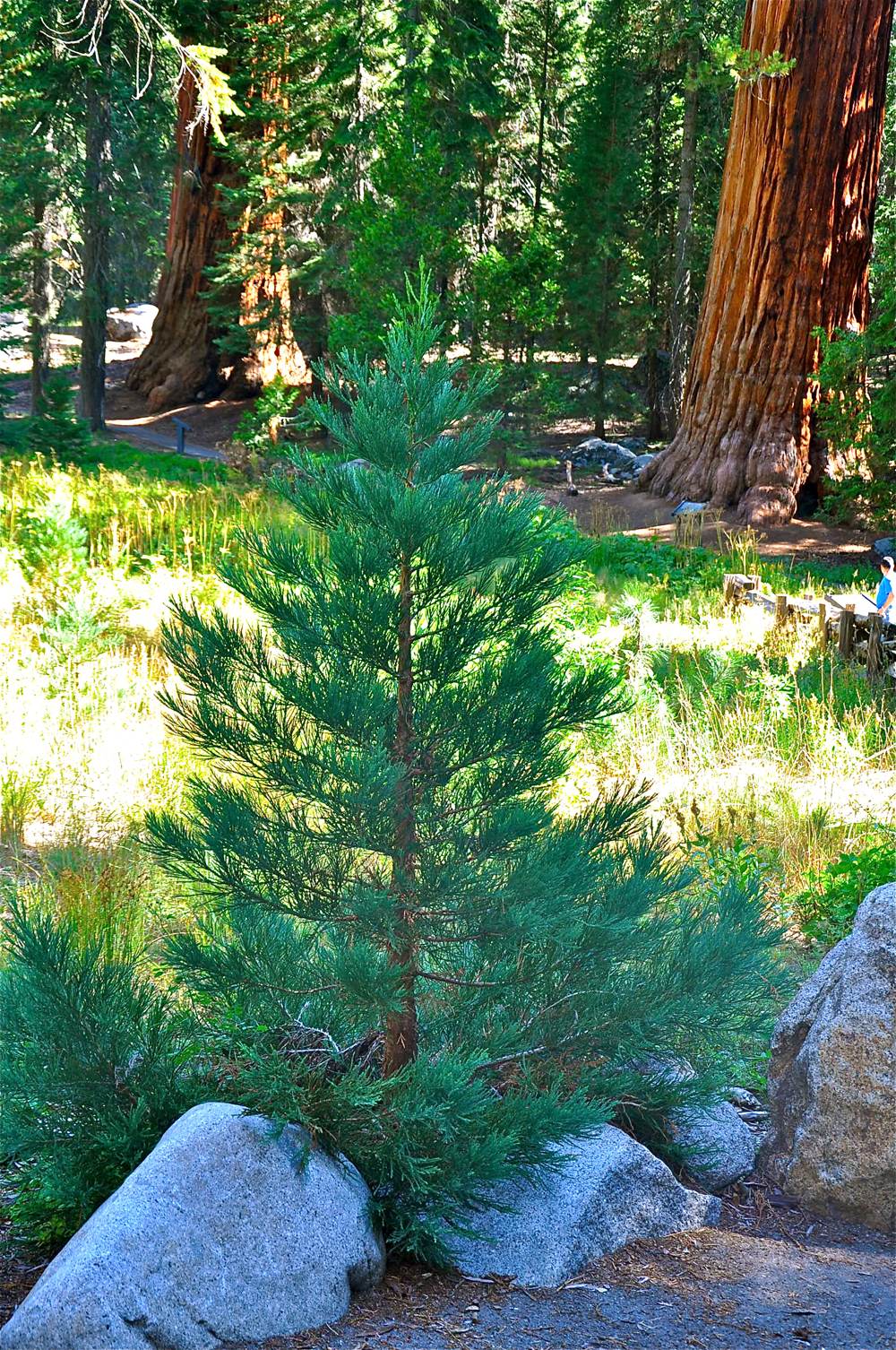
Young sequoias take on the shape of an upside-down ice-cream cone for their first 250 years of growth as they are still considered saplings during that time. Young trees only survive where there are not other plants and taller trees blocking the needed sunlight or competing for life-sustaining water. Only a few of the saplings reach maturity, as many of the small trees are eaten by a wide variety of by grazing animals found in the sequoia forest
Reaching maturity

Giant Sequoias reach maturity after growing for 500 to 700 years. A mature sequoia will have a rounded top and all the low-growing branches will have fallen off, leaving the trunks bare for 100 to 150 feet (30 to 46 meters) above the ground. A special species characteristic of a mature tree is the trunk's slight upward taper. Giant Sequoias can grow 250 to 275 feet (76 84 m) tall and have a width of over 30 feet (9 m). They grow larger branches (some 7 feet (2.1 m) in diameter) in their crowns and have thicker trunks so as to help the forest giants keep their balance in the harsh, windy environment in which they grow.
Beautiful bark
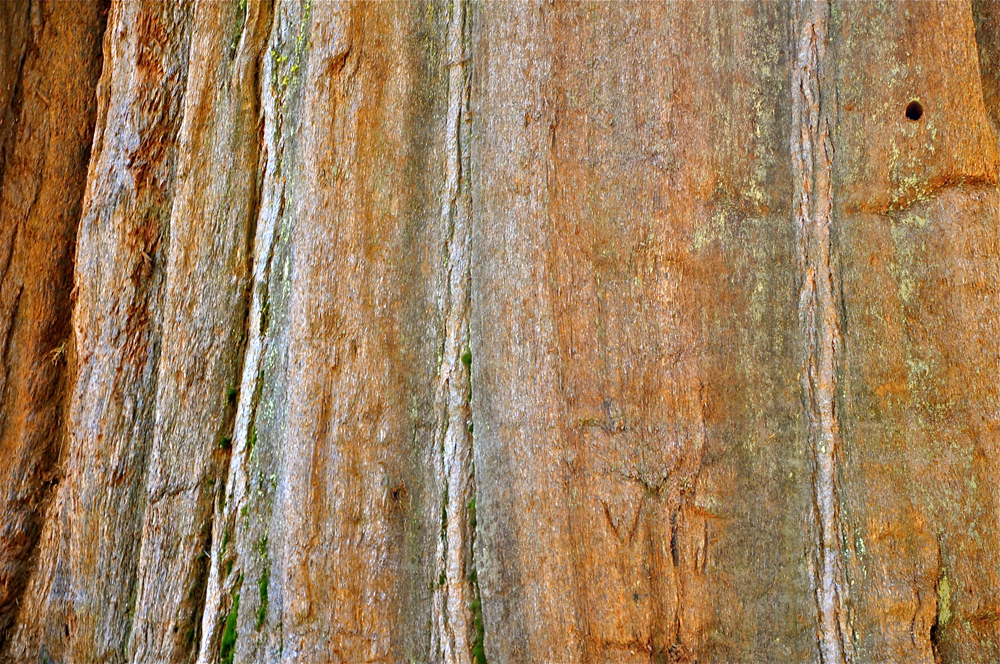
A mature sequoia will have a cinnamon-red bark that makes for a striking appearance on a bright sunny day. The bark is rather spongy and soft when compared with other trees and it may be up to 24 inches (60 cm) thick. As the tree trunk grows outward, the bark must split longitudinally, creating bark ridges that average 10 inches (25 cm) in thickness. The greatest thickness of bark ever measured was 31 inches (79 cm) on a tree found in Kings Canyon National Park in California. This thick bark helps protect the sequoia from fatal damage from forest fires as well as the very cold winters and hot dry summers of the Sierra Nevada Mountains.
Wide base
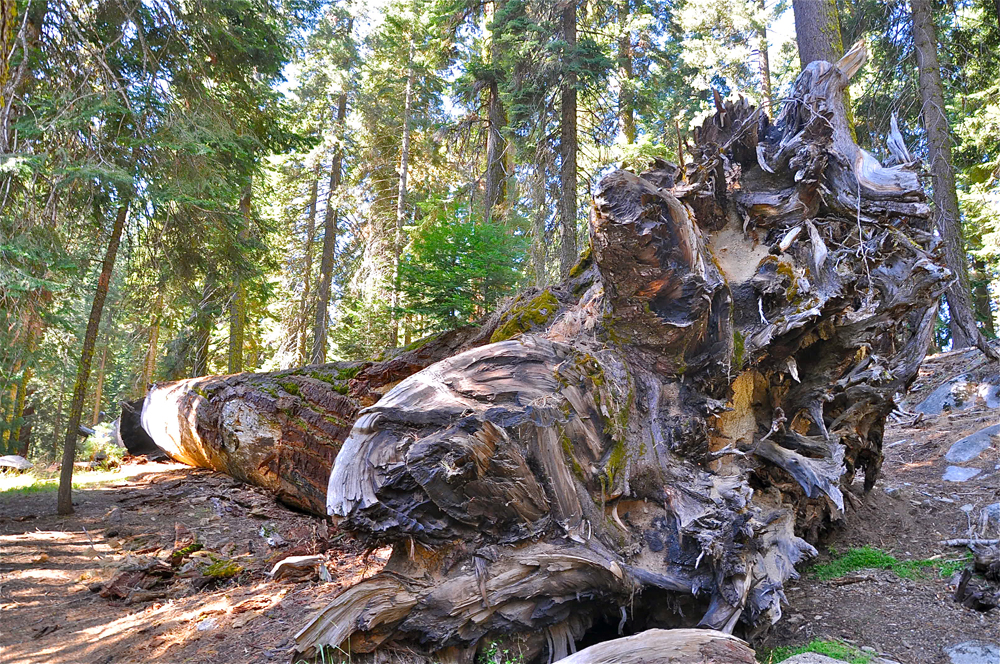
A Giant Sequoia has no taproot to anchor it. Instead, the sequoia has a shallow root system that can spread over an acre of earth and contains over 90,000 cubic feet (2,500 cubic meters) of soil. The matted root system reaches only 12 to 14 feet (3.6 to 4 m) below the surface and supports a tree that can be 300 feet (90 m) tall and weigh almost 2 million pounds (900,000 kilograms). The roots absorb even the slightest amount of rainfall and are in constant competition with other forest plants for the moisture. Scientists believe that a mature sequoia's root system will absorb 500 gallons (1,900 liters) of water every day. That amount is easily accomplished during the high snow cover of winter but can be most challenging during the hot and dry late summer season.
